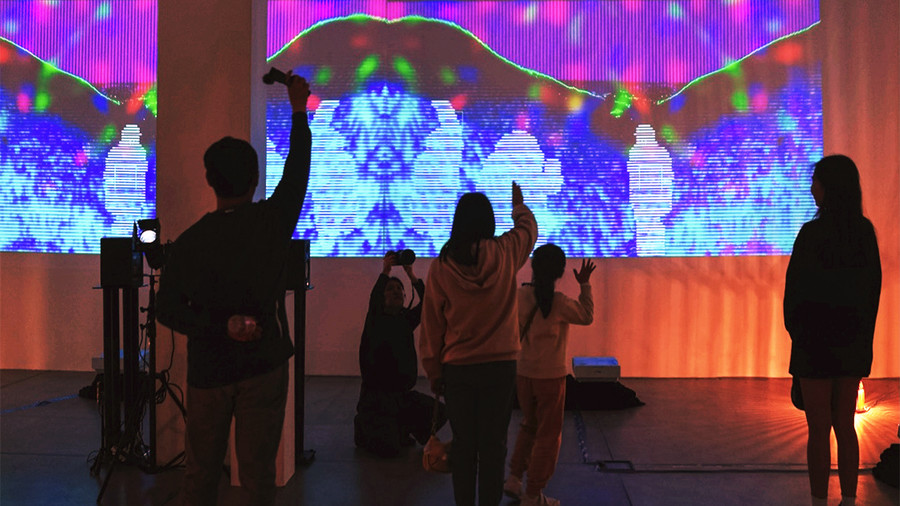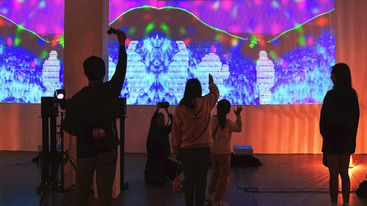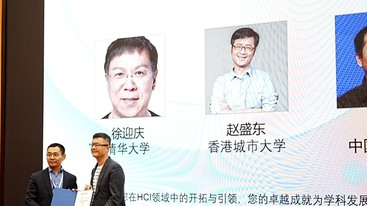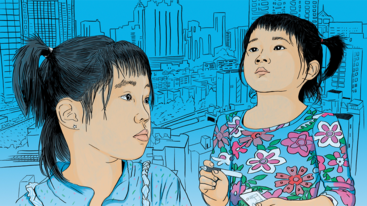Assistant Professor RAY LC is dedicated to connecting humans and machines by designing innovative interactive environments. His work seamlessly integrates large-scale robotics and immersive media with human-computer interaction and speculative narratives to explore the impact of emerging technologies on human emotions and society. Drawing from his research in neuroscience and human-computer interaction, RAY creates thought-provoking artistic experiences. He has received numerous prestigious accolades, and his work has been showcased in esteemed exhibitions worldwide.
RAY implements his expertise in exploring diverse contexts. The following two studies have been recently published on Proceedings of the CHI Conference on Human Factors in Computing Systems (CHI’25). RAY collaborated with a research team in examining how online debates contribute to fostering critical thinking but can also lead to hostility. The study focused on understanding how humans use Generative AI (GenAI) in online debates by creating an online forum where soccer fans can indulge in debates on the topic “Messi vs. Ronaldo” through posts and by leveraging ChatGPT. The team conducted a two-part study involving 13 sessions and semi-structured interviews with 39 participants, followed by content and thematic analyses to merge data from ChatGPT records, interview transcripts, and forum posts. The study concluded that participants utilized ChatGPT for aggressive responses, published posts with repetitive content and unsound arguments, and abandoned ChatGPT in favor of human-human interaction. This research expands existing literature by providing deeper insights into how opposing forum members utilize GenAI to construct and present their arguments.

Moving from soccer to dance, RAY participated in a study exploring the emerging use of motion capture in live dance performances, which allows dancers to embody various avatars on a digital stage. While avatars enable dancers to portray different characters within personalized narratives, there is a lack of research on how improvisation, perception, and movement change when dancers perform as avatars. To address this gap, RAY and his team created five distinct avatars and asked 15 dancers to improvise with them. The team explored the impact of avatars with underrepresented body types in dance—such as heavyset figures, gender-opposed representations, and individuals with disabilities—on movement and perception in both practice and performance settings. Using semi-structured interviews, self-reported surveys, and computer vision data from non-disabled professional dancers, they examined how these avatars influence dancers’ interactions, challenging habitual movement patterns and physical identities. The findings underscore the potential of avatars as instruments for reshaping physical identity and enhancing inclusivity in artistic practices, highlighting their significance not only in transforming dance improvisation but also in strengthening connections across diverse bodies and identities.
RAY leveraged his artistic and creative expertise to raise awareness about climate change through an exhibition that took place in Tai Kwun F Hall on 9 March 2025. The exhibition addressed the issue that the immediate effects of climate change are not explicitly visible leading to a lack of urgency among humans. In order to make people aware, the exhibition encouraged participants to envision the long-term impacts of climate change from a non-human perspective through an interactive, participatory experience. Guided by professors from Baptist University, PolyU, the Academy of Performing Arts, and City University of Hong Kong, participants engaged in workshops where they crafted narratives about the future, developed movement-based presentations, and created artifacts from found materials—symbolizing a world shaped by biodiversity loss and ocean warming. These participatory narratives took the form of found-material sculptures and video installations incorporating motion capture data, which animated non-human avatars to reflect non-human perspectives on climate change. The exhibition emphasized participatory approaches to exploring long-term futures by envisioning the impact of climate change on our natural environment, employing movement and narrative creation as tools for engaging with imagined future scenarios.
RAY was also the Creative Director of a major exhibition titled FUTURE TENSE HONG KONG, organized by the Studio for Narrative Spaces and held from March 1–15 at the Hong Kong Arts Centre. The project explored Hong Kong’s intangible cultural heritage from a fresh perspective, examining how urban growth, social change, and climate change formulate the city’s future identity as imagined by its residents. Going beyond commonly understood aspects of cultural heritage, the exhibition highlighted elements such as culinary methods and featured a VR navigation app for mapping the city’s cultural heritage. It also included a photography and VR exhibit on food imagery, produced by workshop participants through advanced Stable Diffusion technology. Additionally, the exhibition showcased two multimedia artworks by artists Cyan D’Anjou and Foreseen Agency, exploring immersive visual futures, as well as works by Paul Shepherd and Inhwa Yeom, which immersed audiences in two techno-culture worlds highlighting unique cultural idiosyncrasies. By stimulating participants’ imaginations, the exhibition encouraged a collective conversation on the transformation and preservation of Hong Kong’s cultural heritage in a landscape characterized by perennial change.
RAY’s work combines art, technology, and human experience and explores how emerging technologies shape perception and society. From AI-driven debates to immersive exhibitions, his innovative approach inspires new ways of thinking and creating. https://recfro.github.io/




